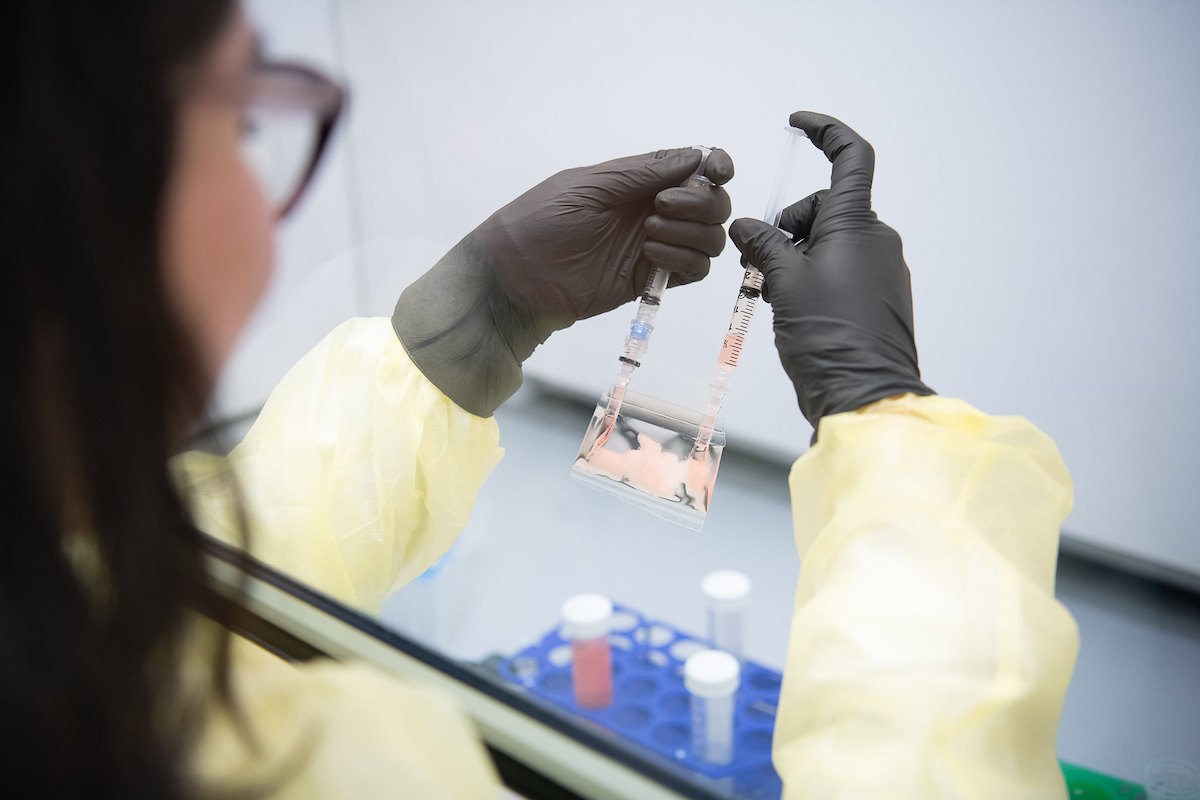Members Login

Channels
Special Offers & Promotions
Sanford Stem Cell Institute to Study Cancer Stem Cell Targeted Therapy in Space

As the second leading cause of death worldwide, cancer has touched the lives of most Americans. In an effort to improve treatments for patients on Earth by better understanding how cancer spreads, a team of researchers is sending cancer organoids to space in an investigation sponsored by the International Space Station (ISS) National Laboratory. In collaboration with Axiom Space, researchers from the University of California San Diego and the Sanford Stem Cell Institute, will study the properties of cancer stem cells—a specific type of cancer cell that drives both cancer growth and relapse—as they regenerate in real time.
The investigation will fly on Axiom Space’s second private astronaut mission (Ax-2). This project will build on the team’s research conducted on the previous Axiom mission in 2022, which sent three-dimensional intestinal cancer organoids into space inside a unique nanobioreactor. That investigation found that not only do tumor stem cells grow rapidly in microgravity, tripling in size in just 10 days, but the cells also activated an enzyme called adenosine deaminase associated with RNA1, or ADAR1. This enzyme allows cancer cells to clone themselves and evade the body’s immune response by becoming dormant, making them resistant to therapies that target dividing cells.
“We want to know if ADAR1 is activated as a stress response to microgravity and if it gets turned on in other types of cancers,” said Catriona Jamieson, professor of medicine at UC San Diego and Sanford Stem Cell Institute director. “So, we will be sending three types of tumor cells into space this time, looking at not only intestinal cancer but also leukemia and breast cancer cell organoids.” The team will examine cell cycle and ADAR1 reporters in the tumor organoids and will test therapies that curtail ADAR1 activity, including fedratinib (Inrebic®) and rebecsinib.
Over the course of the mission, the Ax-2 crew will document biological changes in the tumor organoids using a high-resolution fluorescence microscope to monitor cell cycle and ADAR1 activity. This will help identify biomarkers for early detection and will determine if intervention with ADAR1 inhibitors prevents malignant regeneration. Findings will lay the groundwork for future cancer stem cell research both terrestrially and in space.
According to Jamieson, results from this experiment will help researchers understand if ADAR1 is a generalizable stress response that allows cancer cells to clone themselves and if the enzyme can be turned off with therapeutics such as fedratinib (Inrebic®) or rebecsinib.
“Metastasis occurs when cancer decides to invade and spread to other parts of the body,” Jamieson said. “ADAR1 is a strong trigger to invade or metastasize, which is what we’re trying to switch off.”
By sending three-dimensional tumor organoids into space, Jamieson says the team can conduct research that more accurately mimics how cancer cells behave in the human body compared withother methods, like rodent models. “We are thrilled to study how human cells work in a uniquely stressful environment like microgravity,” she said. “When we compare this to what happens on Earth, we’re seeing that this recapitulates what we see when cancers spread.”
Additionally, because cancer stem cells grow more quickly in space, the research team is able to study the process on shorter timescales to determine if there are points where they can intervene and turn off ADAR1.
“Microgravity speeds up the aging process and allows us to see things in just 10 days that happen over longer periods of time on Earth,” Jamieson said. “So, these experiments are providing us with the opportunity to study not only accelerated aging from a stem cell standpoint but also at what point cells start to become pre-malignant and fully malignant.”
The team is also sending a second project to space as part of the Ax-2 mission whereby they will be studying microgravity-induced stem cell aging in the four Ax-2 astronauts for five years.
Private astronaut missions are providing researchers a new access point in leveraging the ISS National Lab, accelerating research and technology development in low Earth orbit, bringing further knowledge to the scientific community, and enabling commerce in space. The Ax-2 mission is targeted for launch from Kennedy Space Center no earlier than May 21 at 5:37 p.m. EDT. This mission will include more than 15 ISS National Lab-sponsored payloads. To learn more about all ISS National Lab-sponsored research on Ax-2, please visit our launch page.
About the International Space Station (ISS) National Laboratory
The International Space Station (ISS) is a one-of-a-kind laboratory that enables research and technology development not possible on Earth. As a public service enterprise, the ISS National Lab allows researchers to leverage this multiuser facility to improve life on Earth, mature space-based business models, advance science literacy in the future workforce, and expand a sustainable and scalable market in low Earth orbit. Through this orbiting national laboratory, research resources on the space station are available to support non-NASA science, technology and education initiatives from U.S. government agencies, academic institutions, and the private sector. The Center for the Advancement of Science in Space (CASIS), Inc. manages the ISS National Lab, under Cooperative Agreement with NASA, facilitating access to its permanent microgravity research environment, a powerful vantage point in low Earth orbit, and the extreme and varied conditions of space.
Axiom Space is building history, guided by the vision of a thriving home in space that benefits every human, everywhere. The leading provider of human spaceflight services and developer of human-rated space infrastructure, Axiom Space operates end-to-end missions to the International Space Station today while developing its successor, Axiom Station – a permanent commercial destination in low-Earth orbit that will sustain human growth off the planet and bring untold benefits back home.
Media Partners


